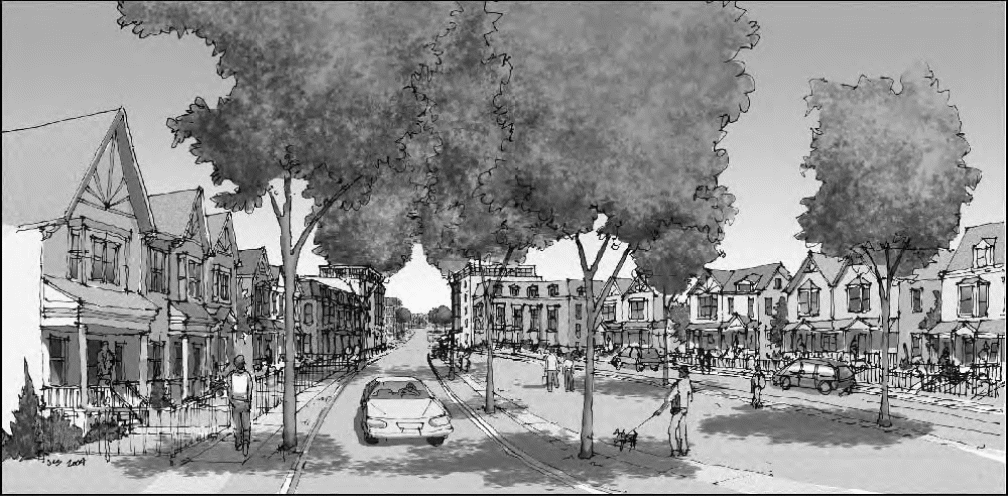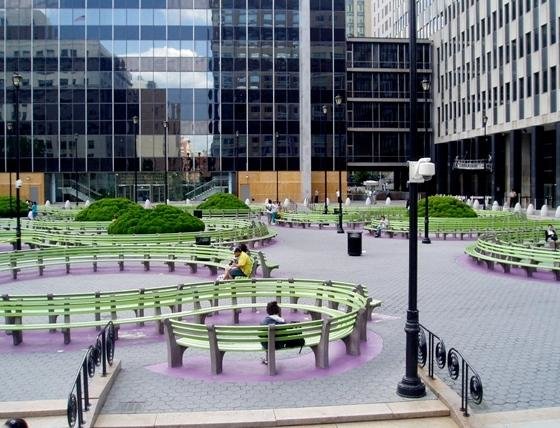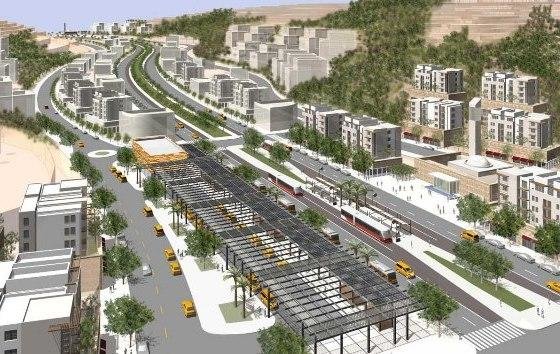Introduction
Various urban theorists have expressed diverse opinions regarding new urban developments. For instance, Leon Krier and other theorists show the importance of capturing new development within its context. On the other hand, Rem Koolhaas, the controversial Dutch urbanist asserts that the focus should be on discovering a new form of urbanism, which does not conform to orderly city.
In addition, the new type of urbanism should express rare forms with no architectural relation in any way with one another. Rem Koolhaas’ view differs sharply with those of other scholars of urbanism. Today, New Urbanism strives to create efficient residential structures. Thus, usages and management of urban places and spaces have become major areas of architect works.
Urban planning and design must be friendly to humanity. Thus, planning and designing urban places and spaces require wide consultations among different stakeholders. This essay explores how Rem Koolhaas’ view differ with those of Prince Charles based on his New Urbanism concepts.
It also shows Koolhaas’ views and their supports from other architects like Frank Gehry, Daniel Libeskind, Will Alsop and others, whose iconoclastic buildings have been widely admired. It also discusses how neo-rationalist ideas can be a model for modern urbanist thinking and re-invigorate contemporary urban design with reference from neo-rationalist and traditional design approaches.
Prince Charles’ views
Prince Charles’ thoughts on architecture and urban planning focus on inner-city renewal, architecture, the quality of life, and the environment. Prince Charles has been an active proponent of neo-traditional concepts in modern urbanism. He shares these views with theorists like Leon Krier and Christopher Alexander. Charles has criticised some elements of contemporary architecture in Britain.
The Prince has stressed his views of neo-traditional urbanism, the need to account for humanity in designs, and the restoration of historic structures. This would reflect combined aspects of new buildings and sustainable design. Prince Charles’ Poundbury shows neo-traditional urbanism. The design is a captivating urban space with unique aspects in the Dorchester village.
Some of the notable features of Poundbury are open spaces, balanced developments of shopping areas, public spaces, and housing. It reflects the concept of New Urbanism in planning, which proponents tout as an ideal principle of good urban design. Proponents of New Urbanism claim that the approach can lessen traffic jams, control suburban developments, and enhance supply of affordable housing.
The major elements of the New Urbanism are preservation of the historic buildings, developing green buildings, and safe streets. Prince Charles has been keen on propagating his views of urban design. The Prince’s ideas show that cities and buildings should not discard human traditions, but rather they should reflect aspects of continuity in human developments (Prince Charles, 1989).
Hence, there is a need to reclaim human traditions and integrate a sense of continuity and traditions in buildings. Overall, cities and buildings must also reflect changes in economies and technologies. On the other hand, Rem Koolhaas’ views differ from those of Prince Charles in urban planning and development.
Koolhaas believes that the context of urban planning and development should not bear resemblance in architectural relations (Koolhaas, 2004). He also notes that cities should not be orderly places, but rather have unique forms of architectural designs. From Prince Charles’ views, Koolhaas’ ideas would mess up many towns. In other words, there would be no order in cities, several sprawling settlements with shopping malls in outskirts of cities (Duany, Plater-Zyberk and Speck, 2010).
There would be too many anonymous buildings almost in every location. Generally, Koolhaas’ ideas would result in the worst forms of city planning and development. Such an environment would increase city congestion. Koolhaas’ concepts of urban design could also result in degraded cities, which could create unsustainable cities. Such cities have added risks of deteriorating soon before their lifetime.
Prince Charles prefers a mixed-use urban planning in which there are income districts, enough space for everyone, and cities with businesses and everyday experiences of life. The Prince wants to create urban developments in which people can experience living. Moreover, he would like architectural works to reflect local traditions, crafts, and identities.
Supports for Koolhaas’ concepts
Other urban architects like Frank Gehry, Daniel Libeskind, Will Alsop and others have supported views of Koolhaas. These urbanists have created greatly admired iconoclastic buildings. This group of urbanists belongs to deconstructivism school of thought. They express independent and stylistic contexts of urban developments in the post-modern period.
Some critics believe that Gehry’s modernism is a new form of eccentric but ‘serious’ architecture (Sebestyen and Pollington, 2003). However, they have also noted that this form of modernism did not resonate well with the public, particularly when used on a large-scale. As a result, many design establishments did not adopt it. The design displayed cold, concrete, glass, and steel, which alienated users.
Many critics concluded that such buildings were not user-friendly. Conversely, Prince Charles’ views supported historical references and planned buildings, which accounted for humanity and experiences. Koolhaas has developed some unorthodox spaces, which include complex forms of architectural designs. These designs are challenging and strenuous to most users.
For instance, Koolhaas designed the SoHo in Manhattan. The structure has a massive area that resembles a crater. Shoppers must take several fickle stairs in order to reach the crater. This has not been easy for many users. Daniel Libeskind has strived to expand some elements of architecture. He believes that buildings should reflect cultural contexts.
As a result, some of Libeskind’s designs strive to show the vision of people, visitors, and others who use them. In this regard, Libeskind aims to incorporate a wide scope of features like nature, technology, arts, and cultures in his urban designs. On the same note, Will Alsop’s designs also have unique colour and unconventional forms. These iconoclastic buildings presented unique features to users.
In fact, some critics claim that perhaps designers try to show daily life experiences with unusual designs. However, these designers fail to achieve the real purposes of their buildings because they only manage to alienate users of such buildings. Hence, designers of these unique urban buildings have failed to capture the essence of buildings and their purposes.
Overall, these designers believe that their complex buildings have various purposes and must reflect post-modern approaches to designs in order to enhance renewal of cities. Koolhaas has been able to accomplish much in the past because of developments in design technologies. These tools have allowed him to create such complex designs.
Construction firms and fabricators can then assemble and build different parts required in modern designs. The works of Zaha Hadid also fall under these complex designers, which support Koolhaas’ views on urban designs. Hadid has perfected the use of computer technologies to design complex structures like MAXXI museum in Rome and others in Germany.
Other critics noted that postmodernism has been deteriorating while modernism was out of order. At this point, Koolhaas’ theory presented unified concept to architecture. Koolhaas aimed to challenge the concept of both post modernism and postmodernism by using abstruse concepts.
Koolhaas’ views incorporated several elements of designs, which contributed to the design complexities (Croisé, 1996). Urbanists wanted to retain both old elements and incorporate several cultures in their works. According to Koolhaas, changes in cultures of the city and the slow pace of design normally result in discrepancy of the architectural project.
Some critics believe that deconstructivist urban structures may be eccentric and not user-friendly. However, the best designs reflect complex and seriousness of the designers. Such building could be unusual in forms because the designers wanted them to reflect unique features. However, users may find it difficult to accept that designers use architectural developments to express their iconic desires.
As a result, some have rejected the extravagance of some designers, who distort functions and create buildings with some ‘useless’ elements and details. Koolhaas notes that some of their structures meet the basic requirements of a building completely. However, he regrets that many users soon forget the concept of functionalism in their structures.
Changes and enlightenment have shaped modernism. However, these are unstable concepts, which designers must incorporate in their works. As a result, they may capture contemporary architecture in the period of globalisation. However, designers may fail to capture all concepts and portray various conditions under which people live.
Designers must perceive architectural developments as a way of capturing various needs of humanity and the use of urban spaces. Thus, this process requires gathering insights of factors that hold urban fabrics. A designer must work with various scales and articulate the use of public places and spaces in their architectural designs. In addition, they must include unique local contexts and other best qualities found in their areas of work.
How neo-rationalist ideas can serve as a model for contemporary urbanist thinking
Neo-rationalists believe that architecture should be autonomous and must redefine itself based on types and rules with regard to all its aspects. Neo-rationalism rejects the idea that technologies may replace architecture. Moreover, it shows the need to integrate cultural and social aspects of urban buildings in designs. It also shows that historical elements can act as rich sources of references designs.
Leon Krier has promoted neo-rationalist ideas by focusing on traditional urbanism and classical architecture. He emphasises the importance of using urban space effectively in design and planning (Krier, 1979). Neo-rationalist represents a form of postmodernism that focused on declining traditions of the 19th century. Contemporary urbanist thinkers must note that neo-rationalist rose due to several changes that took place in urban centres in the 20th century.
Designers noted that urban places and spaces experienced commercial pressure. As a result, there was a need for modern approaches to building and urban context designs. Contemporary urbanist thinkers must note that designers like Aldo Rossi, who championed postmodernism, concentrated on traditional European urban centres and rejected the modern functionalist ideas (Rossi, 1982).
In this sense, neo-rationalism was an approach that aimed to preserve European cities by incorporating elements of modernism in the developed structures. The major challenge to New Urbanism and other post modernism ideas were effective curricula that could integrate all the scopes of the entire city. Modernism ideas started a way of responding to increased demands for private housing with regard to urban planning and use of space.
Changes in the usage of urban places and spaces led to poor planning in most European cities. Contemporary urban thinkers should borrow concepts from Rossi’s views about city planning. In this context, contemporary urban thinkers must note that they cannot develop cities by simply adding other elements. Instead, they must show interrelationship among all elements within a city.
They must also recognise that urban architectural designs have dominated city structures. However, such designs should reflect interrelation and functional elements of cities and any changes that take place in urban environments. For instance, fires may burn down a section of a city and people may modify their structures. Thus, city monuments and other public spaces may have the permanence, which residential buildings may not have.
Thus, architects should capture such ideas in public structures and monuments. While these building designs may change over time, the public features may persist and acquire new directions. City characteristics and characteristics in urban places and space are important part of architectural designs (Trancik, 1986). Neo-rationalists emphasised the importance of typology in urban planning and architectural works.
Thus, modern urbanist should identify common characteristics and features, which are common in urban centres based on the interrelationships with various elements like theoretical concepts like New Urbanism or traditional concepts, formality, and nature of the development.
The concept of city typology supports the idea of creating patterns from individual characteristics found in cities. Patterns would then create large details for architects. In North America, there are common typologies in residential areas, which have similar patterns and characteristics. For instance, suburban areas have wide streets, with neat lawns and beautiful trees and shrubs.
These typologies are common in urban areas or the ‘leafy suburbs’. New Urbanism has recognised the importance of typology in urban design and buildings. New Urbanists assert that designers should integrate physical elements of a place in their designers. This must also account for local preferences and historical aspects of the place.
Contemporary urban thinkers should maintain hierarchy of patterns found in the neo-rationalism approaches. In fact, they must concentrate on establishing the right typology of urban places. New Urbanism also noted the importance of affordability in city designs. Thus, there should be various types of housing to cater for needs of different communities in cities. Architect designs and planning must meet these requirements (Katz, 1993).
Re-invigorate contemporary urban design
Contemporary architects must restore and re-invigorate urban design and planning. This idea comes from a movement that started in the middle of 19th century due to disorder in urban spaces and places that resulted from industrialisation. Re-invigorating modern urban designs must include urban renewal, which should adapt to current urban places and spaces in order to reduce the decline they have experienced (Milroy, 2006).
Today, designers and planners talk of sustainable developments to represent all aspects of designing and planning in the use of urban spaces and places. City planners and designers have provided guidelines that can aid and improve designs and planning (Moughtin, 2003). They take particular interests in usages of spaces and places in urban centres (CABE, 2000).
Re-invigorating contemporary cities should entail rearrangement of urban spaces, public areas, enhancing visual appeal, and improving functionality of the city. Traditionally, urban design has focused on urban setups, architecture, and some elements of landscape urbanism. Today, contemporary urbanists should entail aspects of traditional designs and understand other critical factors like urban economics, real estate development, and political, economic, and socials factors on a place.
Ali Madanipour has recognised the importance of urban design and its impacts on urban space. He argues that architect should understand the relationships between urban design and everyday life of users (Madanipour, 1996).
In the case of Baltimore re-invigoration, urban designers wanted to address social challenges. The designer aimed to create a city that could attract investors and ensure effective use of city resources. At the same time, it focused on tackling the problem of housing by addressing the shifting demographics through different types of housing.

Figure 1: Park Heights Redevelopment, Baltimore
The major challenge has been the use of public spaces due to overlapping responsibilities of residents, city authorities, and development agencies. These stakeholders may have competing interests on the use of public spaces and places. As a result, architects must consult widely in order to capture the visual appeal, structures, and management of public places (Deasy, 1990).
This can enhance functionality and create user-friendly designs in public spaces. In most cases, urban designers fail to exploit the artistic freedom that architecture provides. Madanipour observes the process of urban design is complex and wide in scope and may confuse architects (Madanipour, 1996).
Moreover, they also need interdisciplinary knowledge in diverse fields, which relate to architecture, land use, and urban planning. Overall, urban designers should account for use of public spaces, places, elements of nature, and historical features of an urban centre in their designs (McHarg, 1995).

Figure 2: Contemporary city depicting the use of public spaces and places

Figure 3: Modern urban design and planning
Conclusion
Architecture, in its right context, should reflect relationships between structures in a given place. One must consider a single architectural structure as a part of a whole city. This is the idea of Prince Charles in his New Urbanism views. Contemporary architects must focus on designing and developing spaces and places, which are user-friendly and enrich users’ lives.
This is the main concept of architecture. In fact, contemporary urbanists should ensure that their creations engage users in dialogue with historical aspects of a place and beliefs. However, one must admit that several cities around the US and Europe are hostile to users. Contemporary architects have renewed interests in restoring the glory of cities and enhancing the quality of living.
Thus, cities would be good places and spaces, which are suitable for residential purposes and spending time. New Urbanism promises ‘world cities’ with quality architectural structures for mixed usages, which consist of residential areas, work neighbourhoods, plazas, shopping centres, water fountains, city parks, historical elements, space streets, and visual surprises.
Contemporary cities should have such places to enhance urban stay and quality of life. New Urbanism aims to re-invigorate public realm and restore deteriorated cities because of urbanisation and automobile. New urbanists may not realise their dreams from designs alone. Thus, it requires involvement of several stakeholders to determine usages and maintenance of public places and spaces.
Reference List
CABE 2000, By Design, Urban Design in the Planning System: Towards Better Practice, Thomas Telford, London.
Croisé, E 1996, Euralille:The Making of a New City Centre, Birkhäuser, Boston.
Deasy, C 1990, Designing Places for People: A Handbook on Human Behavior for Architects, Designers and Facility Managers, Watson-Guptill, New York.
Duany , A, Plater-Zyberk, E and Speck, J 2010, Suburban Nation: The Rise of Sprawl and the Decline of the American Dream, North Point Press, New York.
Katz, P 1993, The New Urbanism – Towards an Architecture of Community, McGraw-Hill, New York.
Koolhaas, R 2004, Content, Taschen, Cologne.
Krier, R 1979, Urban Space, Rizzoli International Publications, New York.
Madanipour, A 1996, Design of Urban Space – An Enquiry into a Socio-spatial Process, Wiley, New York.
McHarg, I 1995, Design with Nature, Wiley, New York.
Milroy, B 2006, Thinking Planning and Urbanism, UBC Press, Toronto.
Moughtin, C 2003, Urban design: Street and square, 3rd edn, Elsevier, New York.
Prince Charles, H 1989, A Vision of Britain: A Personal View of Architecture, Doubleday, New York.
Rossi, A 1982, The Architecture of the City, MIT Press, Cambridge, Mass.
Sebestyen, G and Pollington, C 2003, New Architecture, Architectural Press, Oxford.
Trancik, R 1986, Finding Lost Space – Theories of Urban Design, John Wiley & Sons, New York.